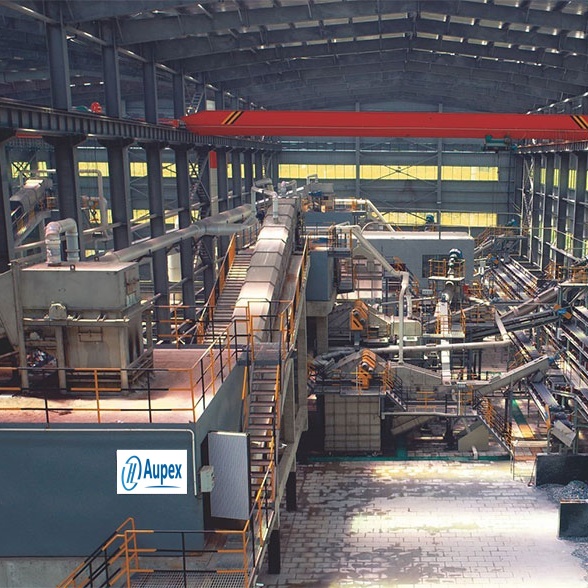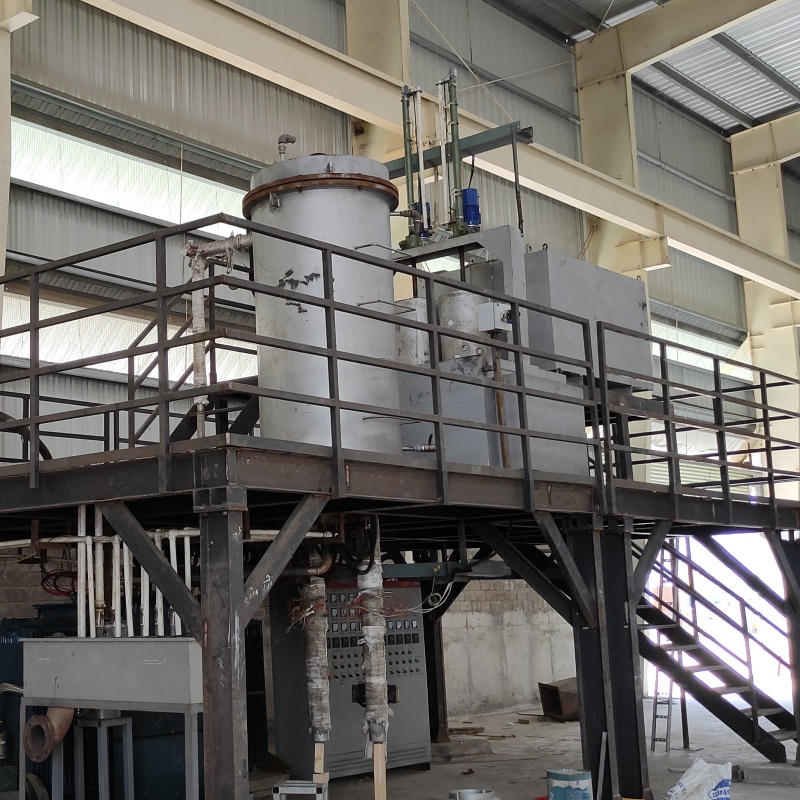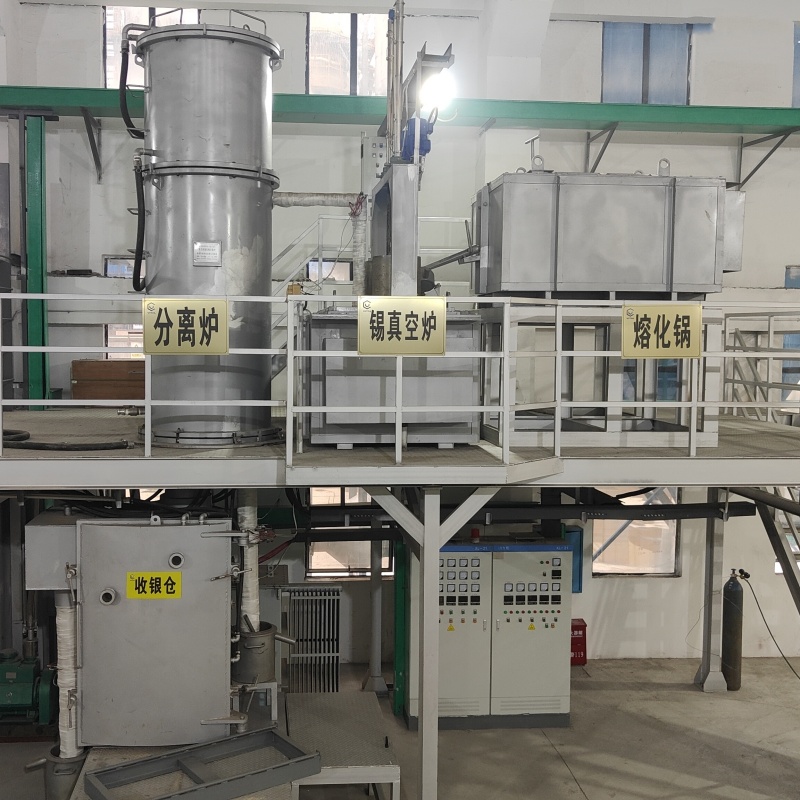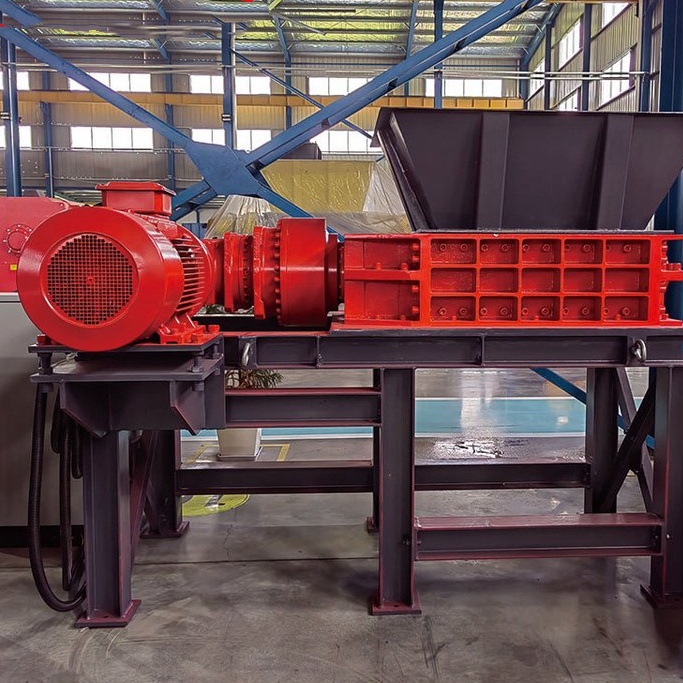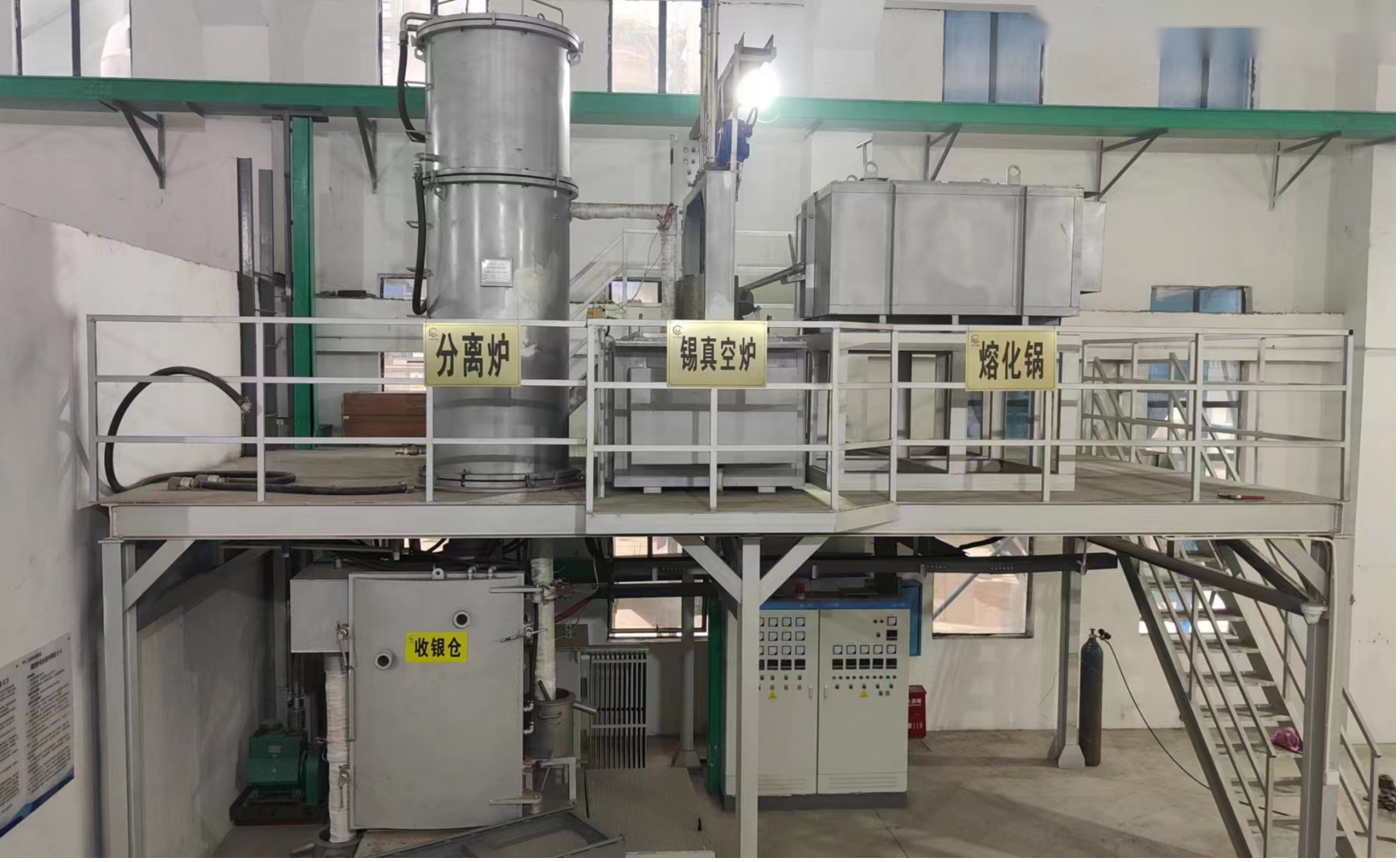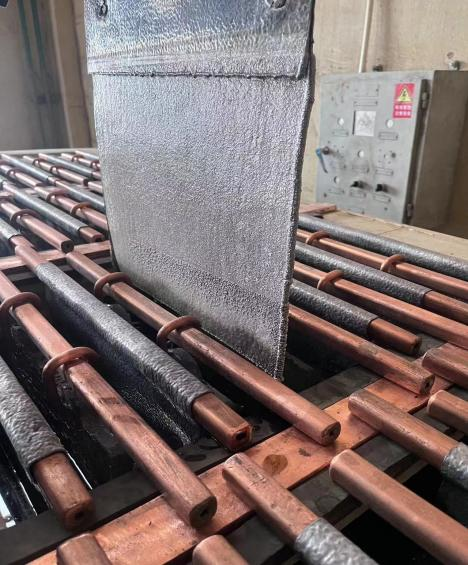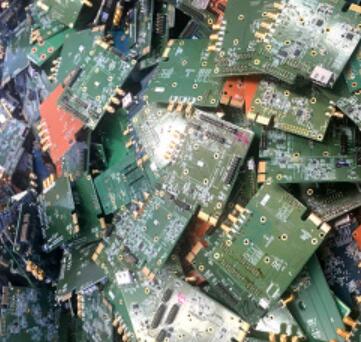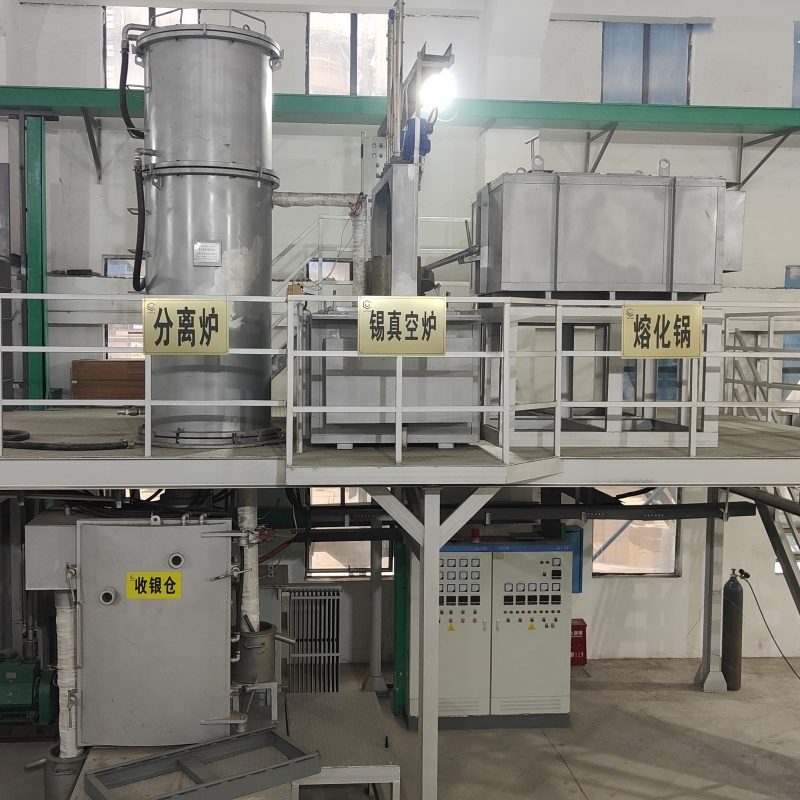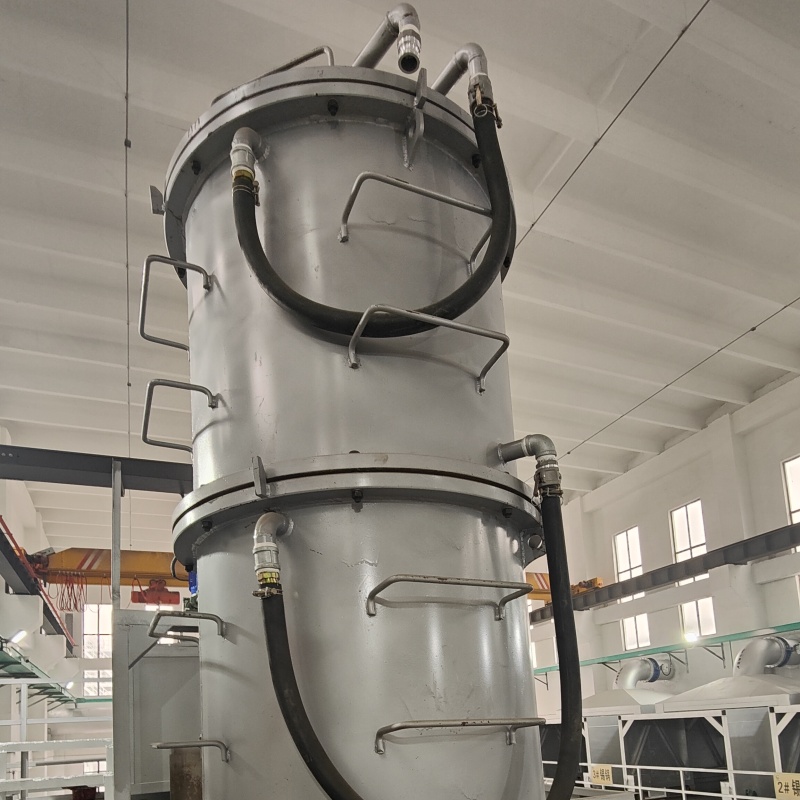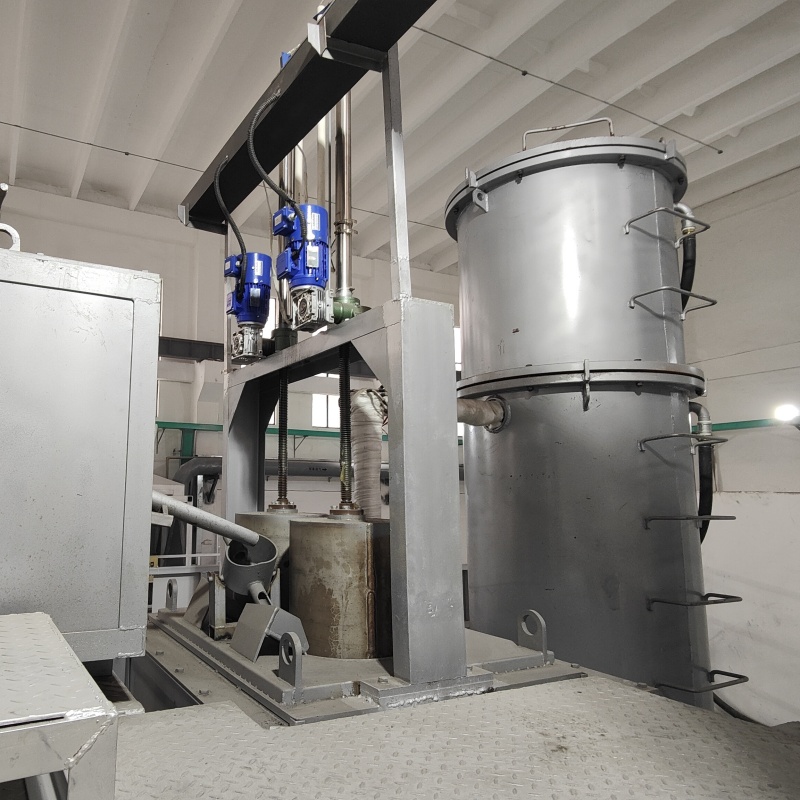Lead Battery Slag Recycling machinery
Lead Battery Slag which is from recycling lead acid line, is the lead-tin alloy(Sn5~35%, Pb 50~93%, remainders are impurities ).
The Lead-Tin vacuum distillation unit, also known as the Lead-Tin-Antimony metal vacuum distiller unit and lead-tin alloy separating vacuum distillation furnace, is utilized for the separation of Tin from lead alloy, which is a byproduct of lead smelting. This process exploits the varying boiling points of Tin, Antimony, and Lead under different vacuum conditions to eliminate impurities.
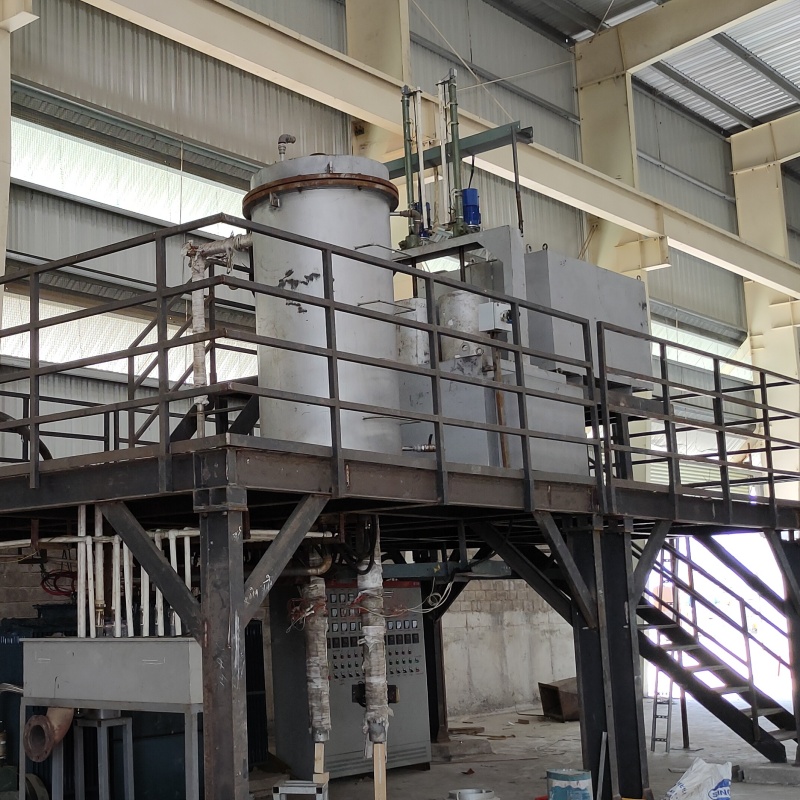
Operating under vacuum, the Pb-Sn-Sb VDF induces distinct boiling points for various metals. Within the VDF's graphite tray, the vapors of lead and tin condense at different locations, resulting in the formation of liquid lead and tin.
The Pb-Sn-Sb VDF relies on electricity for heat generation and operates without emitting any gases, rendering it environmentally preferable. It also incorporates a method for arsenic collection when present in low concentrations (As≤1%). However, if the arsenic content exceeds a certain threshold (As≥2%), it must be removed before furnace utilization.

Raw material:
S/N | Material | Remark |
1. | Lead-Tin alloy | |
2. | Soldering Tin | |
3. | Lead-Tin-Antimony alloy | |
4. | Lead-Tin-Antimony-Arsenic alloy | As≤0.4 |
5. | Crude Tin | |
Main parameters:
NO. | Item | Index |
1 | Treating capacity (raw material) | 15~10t/d |
2 | Vacuum degree | 10-30 Pa |
3 | Recovery rate of Tin | 99% |
4 | Recovery rate of Lead | 99% |
5 | Power | 100 kW |
6 | Energy consumption | ≤950 kWh/t |
FAQ:
Q1: What's payment terms are acceptable?
A: LC, TT and cash.
Q2: Can you provide installation service?
A: Yes, we provide the clients with installation service or installation instruction through online or other methods as per their needs.
Q3: Can you provide design service to client?
A: Yes, we can provide customized design services and Pb-Sn-Sb VDF as per clients' needs.
Q4: What are the raw materials and final product of the Pb-Sn-Sb VDF?
A: The raw materials are the lead-tin alloy, The final product is crude tin (≥985.% Sn). This crude tin can easily be refined using crystallizer and/or impurity-removing pot.
Q5: Does the Pb-Sn-Sb VDF can work alone?
A: Yes. The output product, crude tin, can be sold as merchandise.
Relevant processes: lead-tin separation, tin extraction, lead-tin-antimony vacuum distillation furnace, lead-tin alloy treatment, lead-acid battery recovery slag treatment, crude lead refining, Pb-Sn VDF, vacuum distillation, tin refining,Pb-Sn-Sb VDF.


